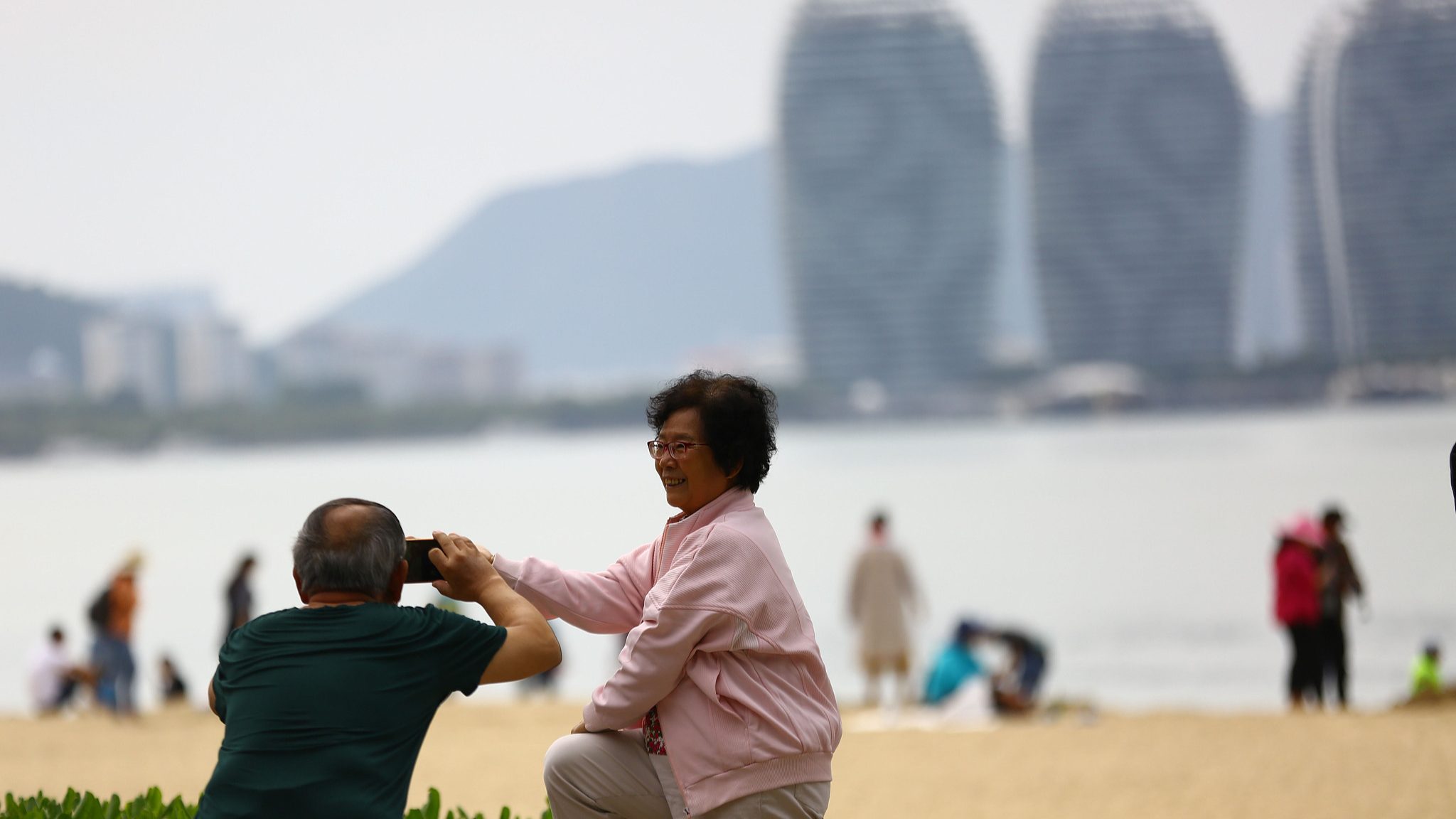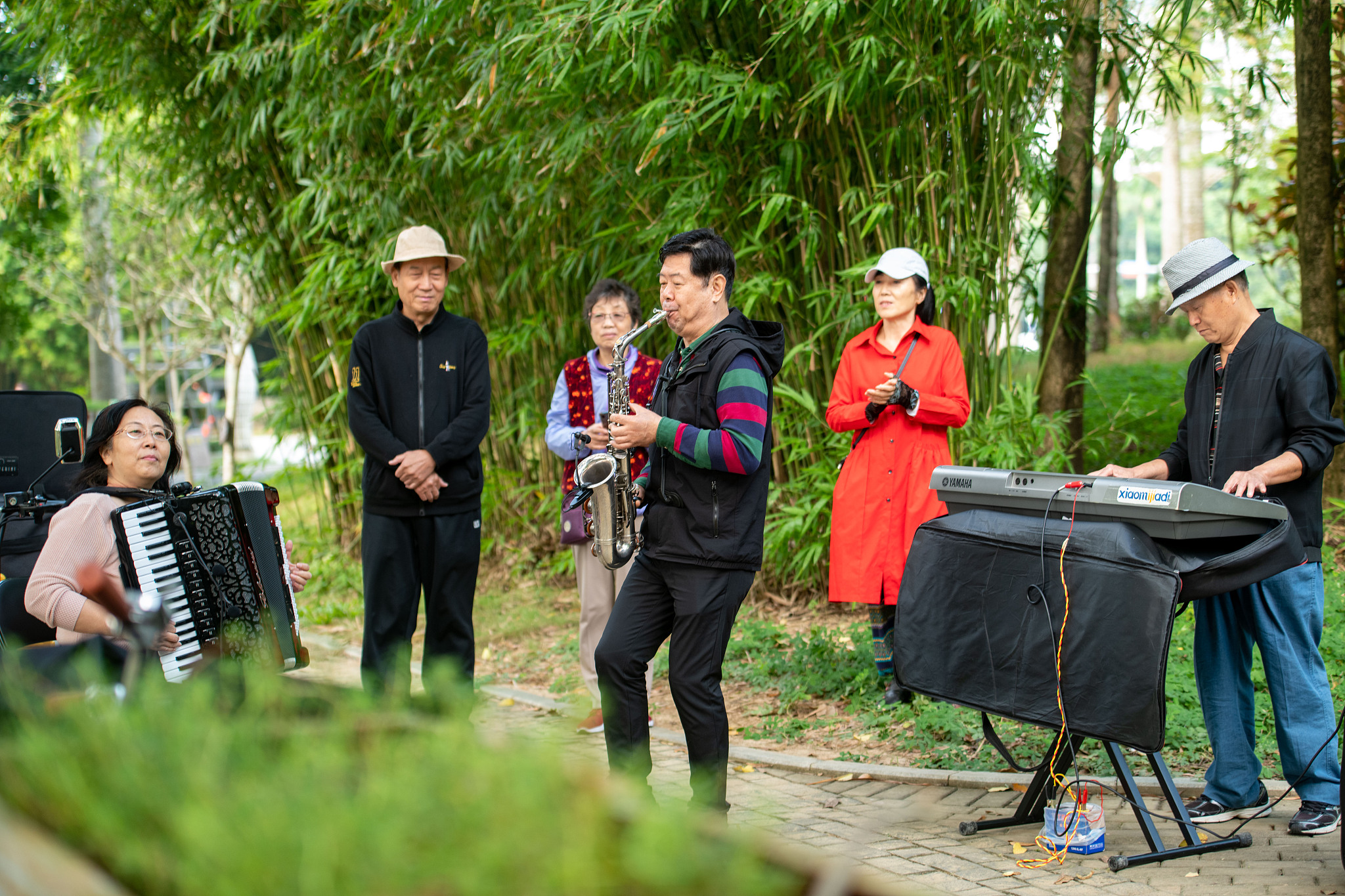
Copied
 Seniors enjoy leisurely moments and take photos on the beach of Sanya Bay in South China's Hainan Province. /CFP
Seniors enjoy leisurely moments and take photos on the beach of Sanya Bay in South China's Hainan Province. /CFP Seniors enjoy leisurely moments and take photos on the beach of Sanya Bay in South China's Hainan Province. /CFP
Every winter for the last three years, 70-year-old Wang Shuqin and her husband have journeyed from their home in Beijing to Sanya, a seaside resort city in south China's Hainan Province. They begin their southern sojourn each November and return north as spring arrives the following year.
"My husband has rhinitis during the cold months," said Wang, explaining the reason behind their annual migration. "Since we started spending our winters there, he has been free from the trouble of a runny nose."
This practice, where seniors travel south for the winter and return north in the spring, similar to migratory birds, has become popular among retired Chinese seniors and is known as "migratory bird-style" elderly care. Seniors like Wang are adopting this seasonal movement in search of milder weather to improve their health and well-being.
The seasonal migration trend in elderly care
Data from the Ministry of Civil Affairs shows that individuals aged 60 and over now constitute 19.8 percent of China's total population as of the end of 2022. As the trend of an aging population becomes more pronounced in China, the elderly are focusing more on elderly care issues. They are increasingly drawn to destinations that offer beautiful scenery, fresh air, affordable living and a relaxed lifestyle for their retirement years.
Recognizing this trend, the Beijing Municipal Civil Affairs Bureau announced initiatives in December to promote "winter in the south and summer in the north" elderly care services. These initiatives focus on developing high-quality, cost-effective off-site healthcare communities to broaden the range of residential and home care options available to older adults, ensuring they have access to diverse and comfortable living arrangements throughout the year.
 Seniors engage in musical entertainment by the riverside of Wanquan River in Qionghai City, South China's Hainan Province. /CFP
Seniors engage in musical entertainment by the riverside of Wanquan River in Qionghai City, South China's Hainan Province. /CFP Seniors engage in musical entertainment by the riverside of Wanquan River in Qionghai City, South China's Hainan Province. /CFP
In line with these initiatives, Hainan is recommended as a winter destination for elderly residents. Known for its temperate climate, it has long been a popular destination for "migratory birds" from northern China. In 2022, Sanya reported a registered population of around 0.73 million, while the number of people staying there for more than half the year exceeded 1.06 million.
"The climate here is pleasant, and we enjoy an abundance of fruits and seafood," said Wang. "Travel is convenient, and living costs are quite reasonable. In Hainan, my husband and I can live comfortably on a single retirement income and still manage to save. That's not something we can do in Beijing."
Challenges and opportunities in elderly care mobility
"As material living standards continue to rise, the choice of 'migratory bird-style' elderly care model reflects an enhanced focus on the spiritual and qualitative aspects of people's lives," said Liu Yaqiu, a researcher at the National Institute of Social Development at the Chinese Academy of Social Sciences (CASS).
"This model not only addresses the personal needs of seniors for a more fulfilling life, but it also alleviates the pressure on elder care in urban areas, particularly in large cities," she told CGTN.
"Additionally, this model encourages higher-income elderly individuals to increase their spending, which in turn boosts the economic vitality of society and promotes development in economically less-developed areas."
Liu explained that traditional elderly care models, such as home care, community care and institutional care, are generally stationary, catering mainly to the less active elderly and those who require assistance. In contrast, the 'migratory bird-style' model combines elder care with travel and has an element of mobility for more active seniors.
"This approach not only acknowledges the elderly as a consumer group but also recognizes them as economically active participants," Liu said.
 Panzhihua City in Sichuan Province has a warm climate characterized by minimal temperature fluctuations and abundant sunshine all year round, with an average of about 8 hours of sunshine daily. /CFP
Panzhihua City in Sichuan Province has a warm climate characterized by minimal temperature fluctuations and abundant sunshine all year round, with an average of about 8 hours of sunshine daily. /CFP Panzhihua City in Sichuan Province has a warm climate characterized by minimal temperature fluctuations and abundant sunshine all year round, with an average of about 8 hours of sunshine daily. /CFP
In addition to Hainan, other regions like Heilongjiang Province and the Inner Mongolia Autonomous Region in northern China and the provinces of Sichuan and Yunnan in the southwest have also embraced the concept of "migratory bird-style" elderly care. For example, Panzhihua, a city in the southernmost part of Sichuan, has enhanced its medical service facilities and developed its transportation infrastructure to better accommodate the needs of the elderly.
However, as the trend gains popularity, it brings with it certain challenges, including issues with medical treatment reimbursement in different provinces and varying levels of service quality, Liu noted, adding that despite measures taken to promote cross-provincial medical insurance in recent years, there are still gaps in the medical resources available across different provinces.
"Government involvement can play a crucial role in establishing a more standardized market," she said. "Such standardization would assist in addressing the specific challenges that arise in the daily lives and care of the elderly."
"A broader coverage of the direct settlement of trans-provincial medical expenses and more designated medical institutions and pharmacies could alleviate the concerns of the elderly who reside in regions outside their home province," she said.